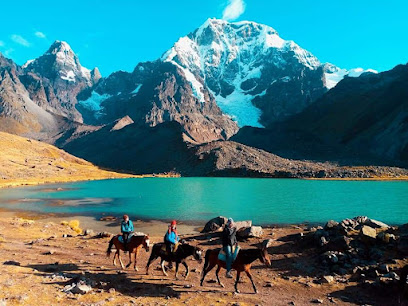
Discover the Untamed Beauty of the Ausangate Trek
Experience the breathtaking beauty of the Ausangate Trek in Peru, a high-altitude adventure through stunning Andean landscapes and traditional Quechua culture.
The Ausangate Trek in Peru is a journey through some of the most stunning landscapes the Andes have to offer. Located in the Cusco region, this trek takes you around the sacred Ausangate Mountain, the fifth highest peak in Peru. The trail offers an unparalleled blend of natural beauty, from snow-capped peaks and turquoise lakes to vibrant red and green hills, making it a paradise for nature lovers and adventure seekers alike. As you traverse the 70 kilometers (43 miles) of the Ausangate Trek, you will encounter traditional Andean villages where the Quechua culture is alive and well. The local herders, who live in harmony with their alpacas and llamas, offer a glimpse into a way of life that has remained unchanged for centuries. This cultural immersion, combined with the awe-inspiring scenery, provides a trekking experience that is both enriching and unforgettable. The trek is considered challenging due to its high altitude, with passes reaching up to 5,200 meters (17,060 feet) above sea level. However, the effort is well worth it, as each step reveals new breathtaking vistas. From the Rainbow Mountain, with its striking, colorful stripes, to the serene glacial lakes, every moment on the Ausangate Trek is filled with wonder. Whether you are an experienced trekker or a first-time adventurer, the Ausangate Trek promises a journey of a lifetime.
Local tips in Ausangate Trek
- Acclimatize in Cusco for at least two days before starting the trek to avoid altitude sickness.
- Pack layers of clothing as temperatures can vary greatly from day to night.
- Hire a local guide for a richer cultural experience and better navigation through the trek.
- Bring a good quality sleeping bag suitable for cold weather.
- Carry enough cash, as there are no ATMs along the trek.
- Respect the local customs and always ask for permission before taking photos of people.
Discover the Untamed Beauty of the Ausangate Trek
The Ausangate Trek in Peru is a journey through some of the most stunning landscapes the Andes have to offer. Located in the Cusco region, this trek takes you around the sacred Ausangate Mountain, the fifth highest peak in Peru. The trail offers an unparalleled blend of natural beauty, from snow-capped peaks and turquoise lakes to vibrant red and green hills, making it a paradise for nature lovers and adventure seekers alike. As you traverse the 70 kilometers (43 miles) of the Ausangate Trek, you will encounter traditional Andean villages where the Quechua culture is alive and well. The local herders, who live in harmony with their alpacas and llamas, offer a glimpse into a way of life that has remained unchanged for centuries. This cultural immersion, combined with the awe-inspiring scenery, provides a trekking experience that is both enriching and unforgettable. The trek is considered challenging due to its high altitude, with passes reaching up to 5,200 meters (17,060 feet) above sea level. However, the effort is well worth it, as each step reveals new breathtaking vistas. From the Rainbow Mountain, with its striking, colorful stripes, to the serene glacial lakes, every moment on the Ausangate Trek is filled with wonder. Whether you are an experienced trekker or a first-time adventurer, the Ausangate Trek promises a journey of a lifetime.
When is the best time to go to Ausangate Trek?
Iconic landmarks you can’t miss
Historic Sanctuary of Machu Picchu
Explore the breathtaking Incan ruins of Machu Picchu, a UNESCO World Heritage Site, and immerse yourself in the rich history of ancient Peru.

Saqsaywaman
Explore the ancient Incan fortress of Saqsaywaman, a breathtaking archaeological site with stunning views and rich history near Cusco, Peru.
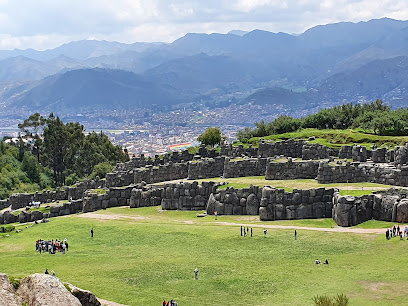
Sacred Valley
Discover the breathtaking Sacred Valley of the Incas, where ancient ruins meet stunning landscapes and vibrant local culture in Peru.

Nevado Auzangate
Discover the breathtaking beauty and cultural significance of Nevado Auzangate, a majestic peak in the Peruvian Andes that captivates adventure seekers.
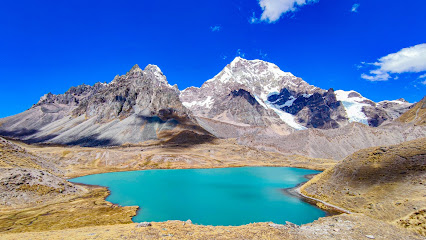
Ausangate 7 Lagunas
Discover the stunning beauty of Ausangate 7 Lagunas, where vibrant lakes meet majestic peaks in an unforgettable trekking adventure.
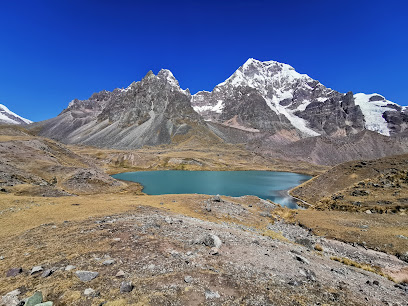
7 lagunas Ausangate
Experience the breathtaking beauty of 7 Lagunas Ausangate, a stunning trek through Peru's majestic Andes with vibrant lagoons and rich cultural encounters.
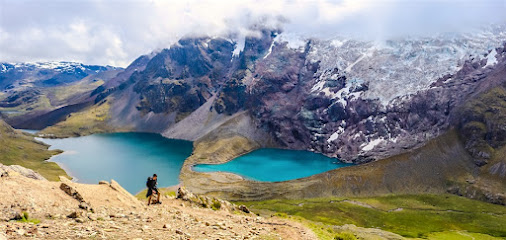
Nevado Ausangate
Explore the stunning landscapes and cultural heritage of Nevado Ausangate, a majestic glacier in the heart of the Peruvian Andes.
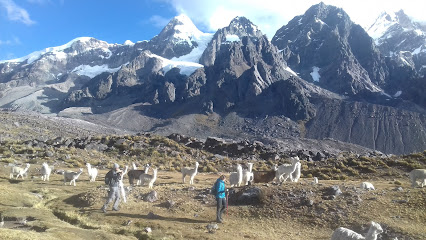
Ausangate Peru
Experience the breathtaking beauty and cultural richness of the Andes with Ausangate Peru, your premier sightseeing tour agency in Cusco.
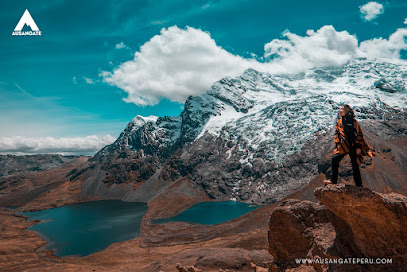
Ausangate Trekking Peru
Experience the breathtaking beauty and cultural richness of the Ausangate Trekking in Peru, a must-visit destination for adventure-seeking tourists.
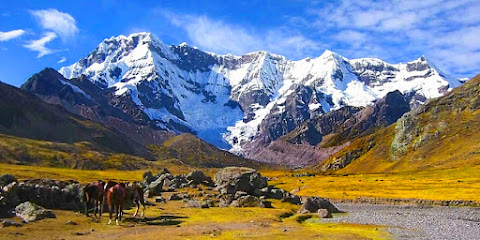
Campo Base Ausangate
Experience the stunning landscapes and rich culture of Campo Base Ausangate, a premier hiking destination in the heart of the Peruvian Andes.
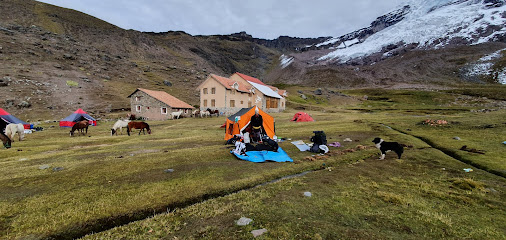
Ausangate
Experience the breathtaking beauty and cultural richness of Ausangate Glacier in the heart of the Peruvian Andes, a paradise for nature lovers and adventure seekers.
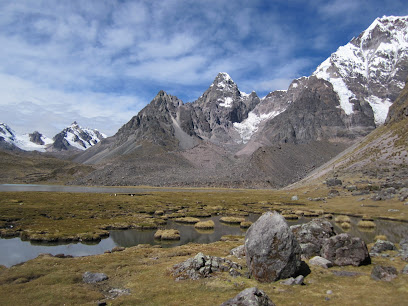
Mirador Ausangate
Discover the breathtaking beauty and tranquility of Mirador Ausangate, a unique farmstay experience in the majestic Peruvian Andes.
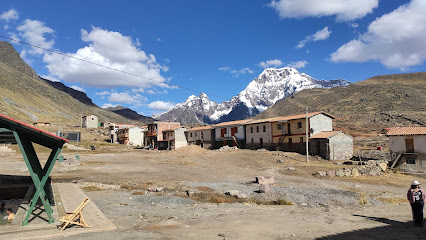
Área de Conservación Regional Ausangate
Experience the breathtaking beauty and rich culture of the Áreas de Conservación Regional Ausangate, a must-visit nature preserve in the Peruvian Andes.
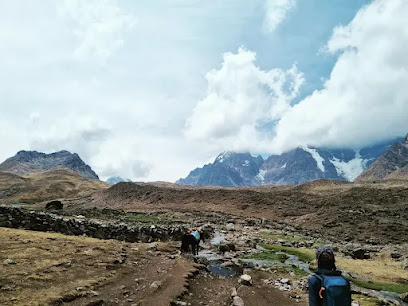
Mano de Ausanagate
Explore Mano de Ausanagate: an ancient Peruvian tourist attraction that blends history, artistry, and stunning Andean landscapes.

Perú AUSANGATE Trek
Experience the breathtaking landscapes and rich culture of the Ausangate Trek in Peru, a top destination for adventure seekers and nature lovers.
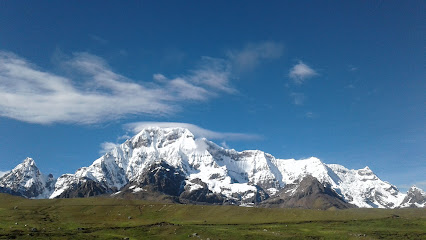
Unmissable attractions to see
Vinicunca Rainbow Mountain
Experience the breathtaking beauty of Vinicunca Rainbow Mountain, a stunning natural wonder with vibrant colors and awe-inspiring views in Peru's Andes.
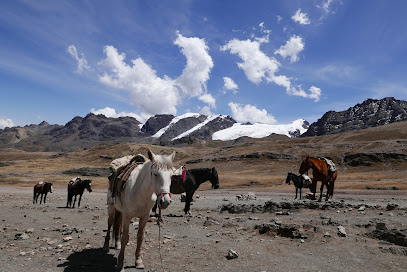
Cochahuasi Animal Sanctuary
Explore Cochahuasi Animal Sanctuary in Cusco, a wildlife refuge dedicated to the rescue and rehabilitation of native Andean animals in a stunning natural setting.

Sapantiana Aqueduct
Explore the historic Sapantiana Aqueduct in Cusco, a stunning blend of colonial architecture and breathtaking Andean views.
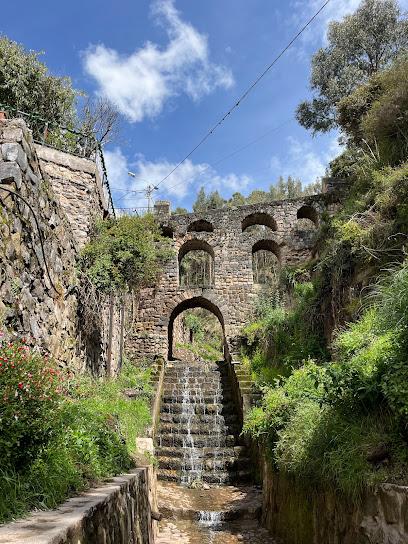
Rainbow Mountain Cusipata Trail Parking
Explore the stunning Rainbow Mountain from Cusipata Trail Parking, a must-visit destination for nature lovers and adventure seekers in Peru.
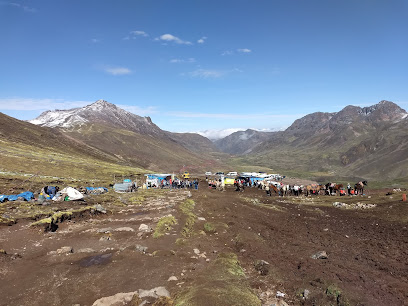
Sacred Valley
Explore the breathtaking landscapes and rich cultural heritage of Sacred Valley, a must-visit destination in Peru, perfect for history lovers and adventurers alike.

Manuel Chávez Ballón Site Museum
Unearth the wonders of the Inca civilization at the Manuel Chávez Ballón Site Museum, a gateway to Peru's rich archaeological heritage.
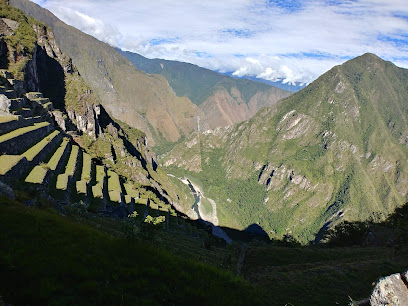
Rumicolca
Explore Rumicolca, an awe-inspiring archaeological site near Cusco, revealing the ingenuity of Inca architecture amidst stunning Andean landscapes.
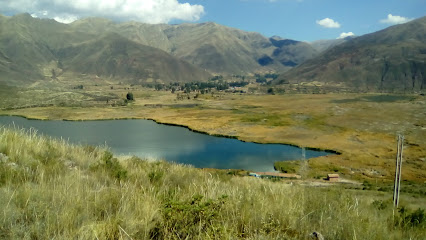
MOUNTAIN VIEW EXPERIENCE
Discover the breathtaking landscapes and rich flavors at the Mountain View Experience in Maras, Peru, where comfort meets adventure.

Aguas Termales Pacchanta
Experience the healing power of nature at Aguas Termales Pacchanta, a serene thermal bath escape in the stunning Andes of Peru.
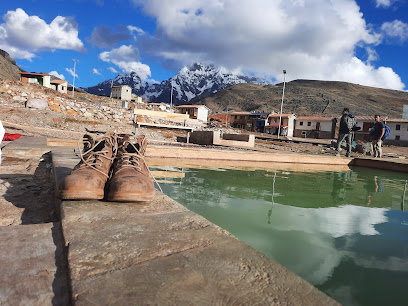
Farallones de Tecsecocha
Discover the stunning Farallones de Tecsecocha, where breathtaking landscapes meet rich cultural heritage in the heart of Peru's Cusco region.
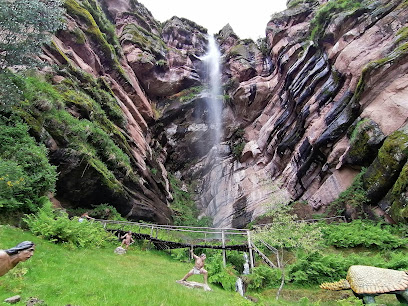
Kusicancha
Explore the profound history and culture of the Andes at Kusicancha, a must-visit museum in the heart of Cusco, Peru.
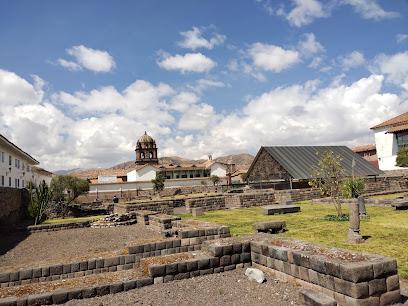
Chachabamba
Explore Chachabamba, the enchanting gateway to the Inca Trail, combining rich history with stunning landscapes in the heart of the Andes.

Bosque de Piedras
Explore the stunning Bosque de Piedras, a captivating nature preserve in Uchullujllo, home to breathtaking stone formations and rich biodiversity.
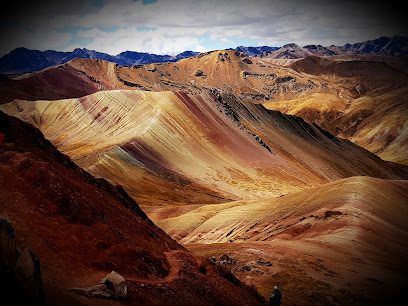
Cordillera del Arcoiris Palccoyo
Discover the stunning rainbow mountains of Cordillera del Arcoiris Palccoyo, a hidden gem in the Andes perfect for nature lovers and adventurers.
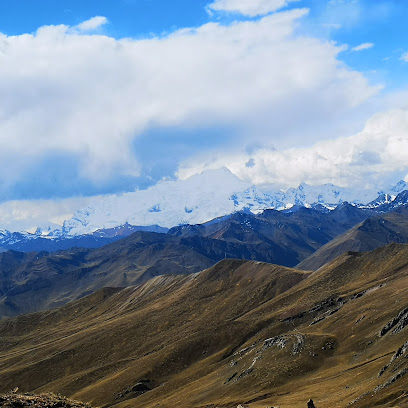
Calle Loreto
Explore Calle Loreto in Cusco, Peru - a historical landmark featuring stunning Inca architecture and vibrant local culture.
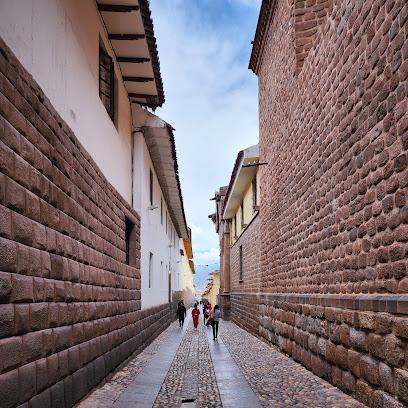
Essential places to dine
Pachapapa
Discover the rich flavors of Peru at Pachapapa, a charming restaurant in Cusco serving authentic dishes made from fresh local ingredients.
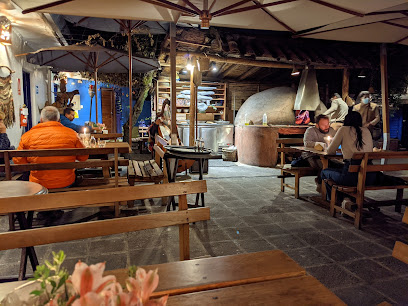
Organika Restaurant
Experience authentic Peruvian flavors at Organika Restaurant in Cusco - where local ingredients meet innovative cuisine.
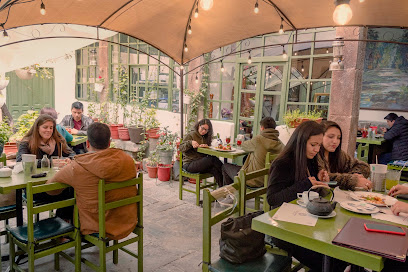
Mapacho Craft Beer Restaurant
Experience authentic Peruvian cuisine paired with exquisite craft beers at Mapacho Craft Beer Restaurant in Cusco.
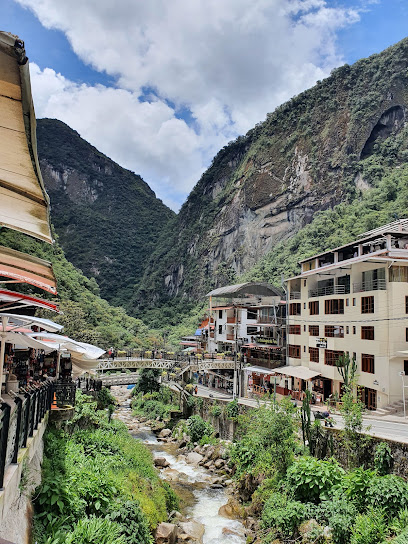
Republica Del Pisco - Cusco
Discover the essence of Peruvian cuisine at Republica Del Pisco - a vibrant restaurant-bar in the heart of Cusco offering exquisite dishes and cocktails.

Morena Peruvian Kitchen
Experience authentic Peruvian cuisine at Morena Peruvian Kitchen in Cusco – where every dish celebrates rich flavors and tradition.
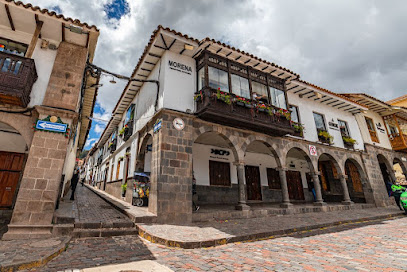
Yaku Restaurant
Experience the best of Peruvian gastronomy at Yaku Restaurant in Cusco - where tradition meets innovation in every bite.
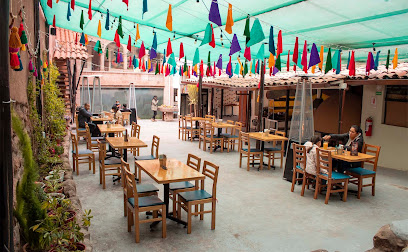
Jack's Café
Discover culinary delights at Jack's Café in Cusco—where every meal is made with love and local ingredients.
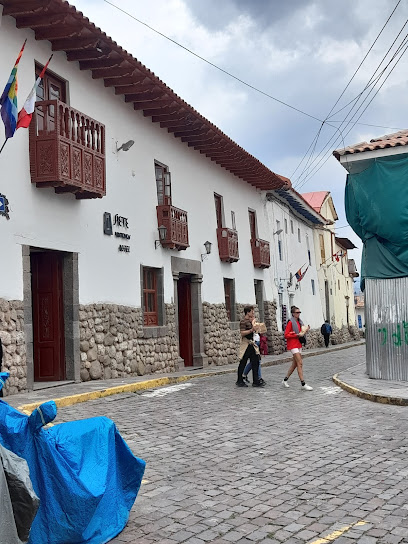
Chicha por Gaston Acurio
Experience authentic Peruvian cuisine at Chicha by Gaston Acurio in Cusco - where tradition meets innovation in every dish.
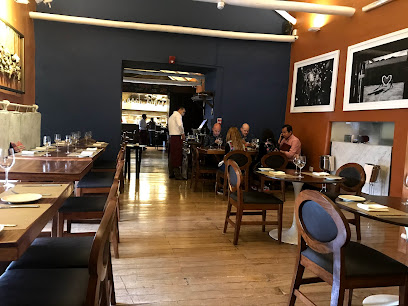
Full House Peruvian cuisine &craft beer
Discover authentic Peruvian flavors at Full House - a must-visit restaurant in Aguas Calientes for food lovers exploring Machu Picchu.
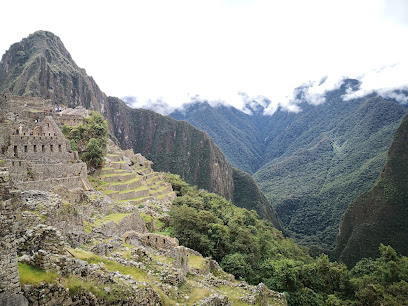
Inka Grill
Experience authentic Peruvian cuisine at Inka Grill in Cusco – where tradition meets taste in every dish.
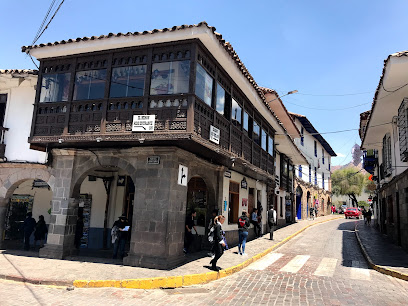
Crepería & Backpacker La Bo'M
Discover delicious crepes and cozy accommodations at Crepería & Backpacker La Bo'M in Cusco's historic center.
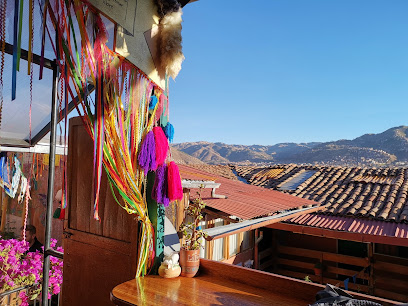
Calle del Medio Restaurante Bar
Experience authentic Peruvian flavors at Calle del Medio Restaurante Bar in Cusco's vibrant Plaza de Armas.
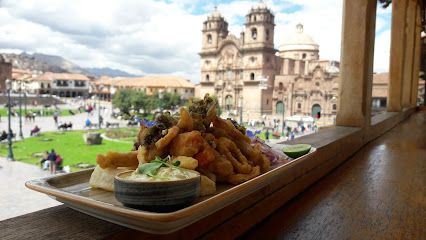
Qespi Restaurant & Bar
Discover authentic Peruvian flavors at Qespi Restaurant & Bar in Cusco's historic center, where local ingredients meet culinary excellence.
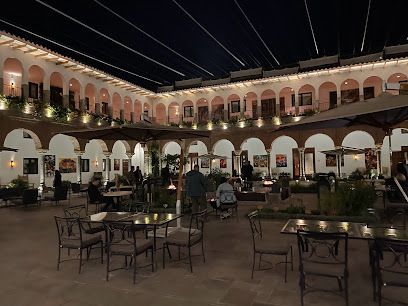
MAP Café
Discover the exquisite flavors of Peru at MAP Café in Cusco - where tradition meets modern gastronomy in a stunning setting.
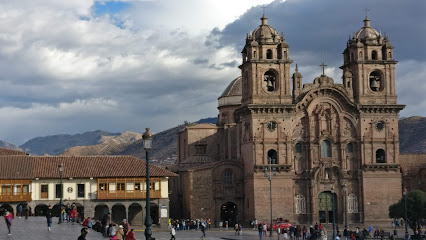
Inti House
Experience authentic Peruvian cuisine at Inti House in Aguas Calientes - where tradition meets flavor amidst breathtaking scenery.
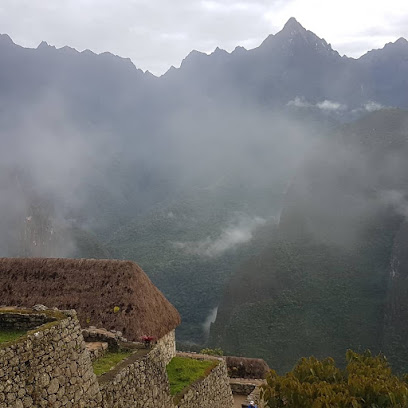
Markets, malls and hidden boutiques
Plaza Mayor de Cusco
Explore the vibrant Plaza Mayor de Cusco, a historic plaza adorned with captivating architecture, local culture, and delicious Peruvian cuisine.
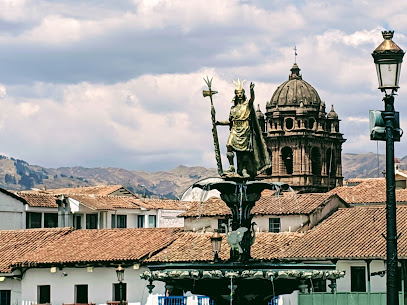
Mercado Central de San Pedro
Discover the heart of Cusco at Mercado Central de San Pedro, a vibrant market filled with local flavors, crafts, and culture.
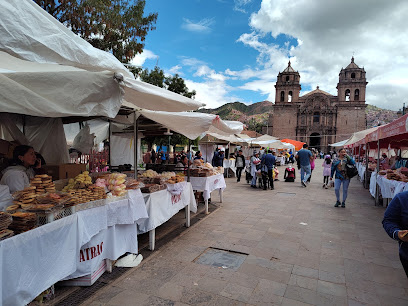
Palacio del Inka, a Luxury Collection Hotel, Cusco
Discover the luxury and history of Palacio del Inka, a perfect blend of culture and comfort in the heart of Cusco.
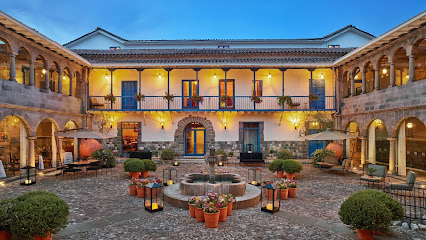
Handicraft Center Cusco
Explore the Handicraft Center in Cusco for a vibrant selection of authentic Peruvian souvenirs and artisanal treasures.
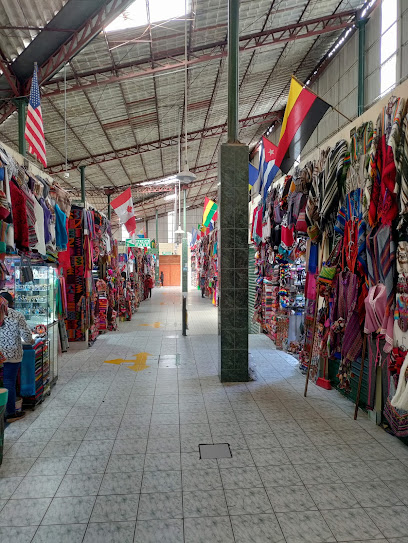
Manos de la Comunidad
Explore the vibrant handicrafts of Peru at Manos de la Comunidad in Cusco, where local artisans showcase their incredible craftsmanship.
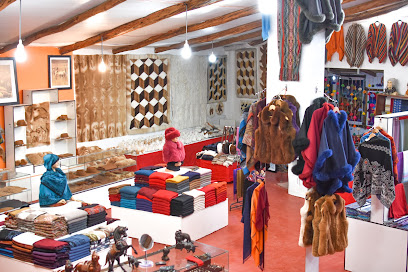
ARTESANÍAS ASUNTA
Explore the vibrant world of Peruvian handicrafts at ARTESANÍAS ASUNTA, where authenticity meets artistry in the heart of Cusco.
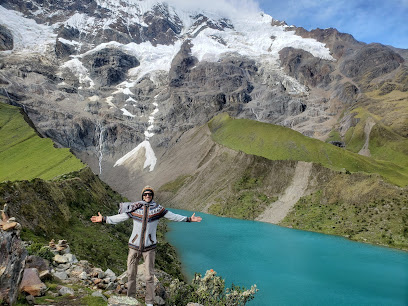
Rainbow Mountain Peru Travel Agency
Discover the vibrant hues of Rainbow Mountain, a stunning natural marvel in the Andes of Peru, perfect for adventurous travelers and nature lovers.
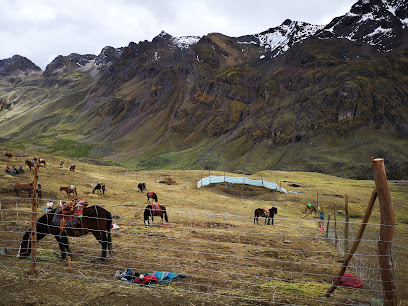
Nevado Auzangate
Experience the breathtaking beauty of Nevado Auzangate, a majestic peak in the Andes, perfect for adventure seekers and nature lovers.
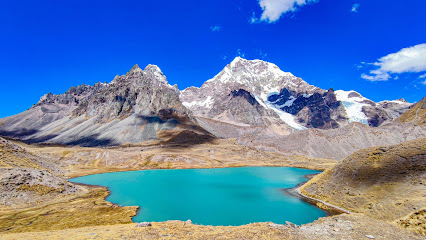
Speedy Gonzalo Camping Equipment
Your ultimate destination for camping gear and outdoor clothing in the heart of Cusco, Peru.
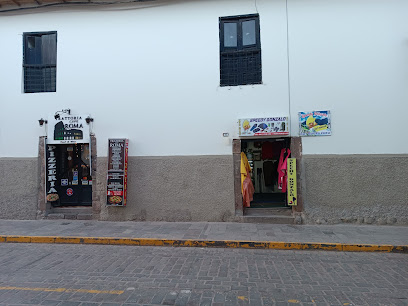
EKEKOS SAN BLAS -art & COLORS
Discover a vibrant collection of Peruvian art and handicrafts at EKEKOS SAN BLAS, a must-visit destination in the heart of Cusco.
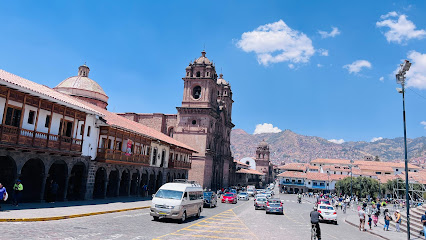
hilo
Discover unique Peruvian clothing at Hilo in Cusco, where quality meets culture in a boutique shopping experience.

7 lagunas Ausangate
Experience the breathtaking beauty of the 7 Lagunas Ausangate, a hidden treasure in the heart of the Peruvian Andes, perfect for adventurers and nature lovers.
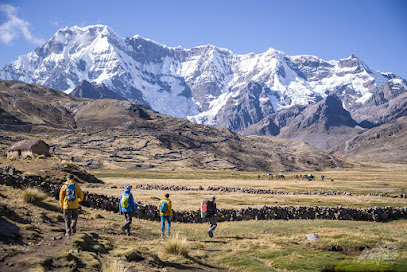
Hostal Ausangate
Discover the charm of Tinki at Hostal Ausangate, your ideal base for exploring the breathtaking Andes and embarking on unforgettable adventures.
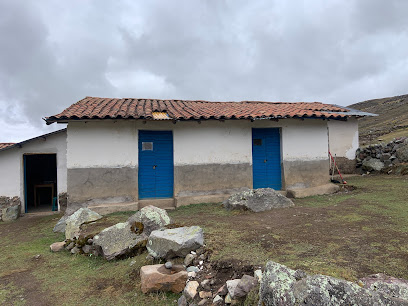
Ausangate Peru
Explore the stunning landscapes and rich culture of the Ausangate region in Peru, a haven for nature lovers and adventure seekers.
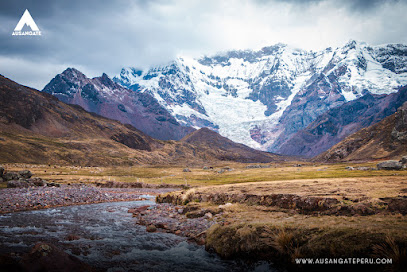
Concept store
Explore a charming concept store in Cusco featuring unique clothing and accessories that blend local culture with modern fashion trends.
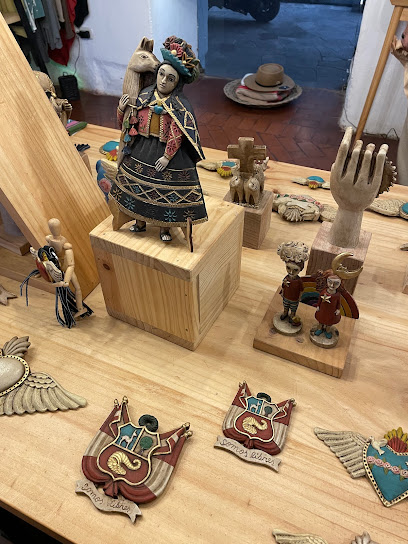
Local Phrases about Ausangate Trek
-
- HelloQanmi
[kahn-mee] - GoodbyeAllinllataq
[ahl-leen-yah-tahk] - YesArí
[ah-ree] - NoMana
[mah-nah] - Please/You're welcomeAsiriy
[ah-see-ree] - Thank youSulpayki
[sool-pie-kee] - Excuse me/SorryPipas
[pee-pahs] - How are you?Ima kashanki?
[ee-mah kah-shahn-kee] - Fine. And you?Allin. Qanmi?
[ahl-leen. kahn-mee] - Do you speak English?Inglispayki rimaykuyki?
[ing-lees-pie-kee ree-mahy-koo-ykee] - I don't understandMana yupaychani
[mah-nah yoo-pie-chah-nee]
- HelloQanmi
-
- I'd like to see the menu, pleaseMenukuna qawaykuni kay?
[meh-noo-koo-nah kah-wahy-koo-nee kie] - I don't eat meatKarnirqa mana ñuqaychani
[kahr-nee-rr-kah mah-nah nyoo-kahy-chah-nee] - Cheers!Ari qillqay
[ah-ree keel-yahy] - I would like to pay, pleaseTaripaykuni kay?
[tah-ree-pahy-koo-nee kie]
- I'd like to see the menu, pleaseMenukuna qawaykuni kay?
-
- Help!Jatun!
[hah-toon] - Go away!Llasa!
[llah-sah] - Call the Police!Pulispiy llamay!
[poo-lees-pee-ee yah-mahy] - Call a doctor!Yachachiq llamay!
[yah-chah-cheek yah-mahy] - I'm lostAyniymi
[ah-ynee-mee-mee] - I'm illPurikuy
[poo-ree-koo-ee]
- Help!Jatun!
-
- I'd like to buy...Suniyniyki...
[soo-nee-ee-nee-kee] - I'm just lookingQhawaykuy
[kah-wahy-koo-ee] - How much is it?Ima chay?
[ee-mah chahy] - That's too expensiveTaqanakuy
[tah-kahn-ah-koo-ee] - Can you lower the price?Chaymanta uchuyta?
[chahy-mahn-tah oo-chwee-tah]
- I'd like to buy...Suniyniyki...
-
- What time is it?Ima qamuy?
[ee-mah kah-moo-ee] - It's one o'clockTawa kawanku
[tah-wah kah-wahn-koo] - Half past (10)Iskay punchaw
[ees-kahy poon-chahw] - MorningPacha
[pah-chah] - AfternoonInti chaskiq
[een-tee chahs-kee] - EveningTuta
[too-tah] - YesterdayIllapa
[eel-lah-pah] - TodayKay
[kie] - TomorrowK'anchay
[kah-nchahy] - 1Huk
[hook] - 2Iskay
[ees-kahy] - 3Kimsa
[keem-sah] - 4Tawa
[tah-wah] - 5Pichqa
[peech-kah] - 6Soqta
[sohk-tah] - 7Qanchis
[kahn-chees] - 8Pusaq
[poo-sahk] - 9Iskay
[ees-kahy] - 10Chunka
[choon-kah]
- What time is it?Ima qamuy?
-
- Where's a/the...?Qam...
[kahm...] - What's the address?Ima sutiy?
[ee-mah soo-tee] - Can you show me (on the map)?Kay pachaqchini?
[kie pah-chahk-chee-nee] - When's the next (bus)?Ima huk...
[ee-mah hook...] - A ticket (to ....)Chiqan...
[chee-kahn...]
- Where's a/the...?Qam...
History of Ausangate Trek
-
The Ausangate Mountain, standing at 6,384 meters (20,945 feet), has been considered sacred by the local Quechua people for centuries. It is believed to be a deity or 'Apu' that protects the region and its inhabitants. The reverence for Ausangate dates back to the Inca civilization, where it was worshipped as part of their complex spiritual and cosmological beliefs.
-
The area around Ausangate was an important part of the Inca Empire. The Incas established various routes and trails through the region, including parts of what is now known as the Ausangate Trek. These trails were used for trade, pilgrimage, and military purposes. The region was also a source of valuable resources like water and agricultural products.
-
Held annually near the base of Ausangate, the Qoyllur Rit'i (Star Snow) Festival is one of the most important religious events in the Andean calendar. The festival, which dates back to pre-Columbian times, combines Catholic and indigenous beliefs and attracts thousands of pilgrims from across the region. Participants undertake a grueling trek to the Sinakara Valley, where they perform rituals and dances in honor of the mountain deity and the Lord of Qoyllur Rit'i.
-
During the Spanish colonial period, the region around Ausangate saw significant changes. The Spanish introduced new agricultural practices, livestock, and Christianity, which blended with indigenous traditions. Colonial roads and settlements developed, some of which intersect with the ancient Inca trails that form part of the modern Ausangate Trek.
-
In recent decades, the Ausangate Trek has gained popularity among adventure travelers and trekking enthusiasts. The trek offers stunning landscapes, including glacial lakes, hot springs, and colorful mountains. Local communities have embraced eco-tourism, providing guiding services, homestays, and cultural experiences for visitors. This modern phase of tourism aims to preserve the natural environment and support sustainable development in the region.
Ausangate Trek Essentials
-
The Ausangate Trek is located in the Andes of Peru, southeast of Cusco. The nearest international airport is Alejandro Velasco Astete International Airport in Cusco. From Cusco, you can take a bus or a shared taxi (collectivo) to the town of Tinke, which is the starting point for the trek. The journey from Cusco to Tinke typically takes around 3 to 4 hours by road. It is advisable to arrange transportation in advance, especially during the high trekking season.
-
Once in Tinke, the primary mode of transportation is on foot as you embark on the Ausangate Trek. Mules and horses are also available for hire to carry gear and supplies, which can be arranged through local tour operators. For those who prefer not to hike the entire distance, it is possible to arrange for horseback riding along parts of the trek. Public transportation options within the remote areas of the trek are limited, so planning and coordination with local guides or tour companies are essential.
-
The official currency in Peru is the Peruvian Sol (PEN). While credit cards are accepted in major hotels and restaurants in Cusco, it is crucial to carry cash for transactions in smaller towns like Tinke and along the trek. ATMs are available in Cusco, but it is recommended to withdraw sufficient cash before departing for the trek. Ensure you have small denominations, as change can be an issue in rural areas.
-
The Ausangate Trek is generally safe, but there are a few precautions to keep in mind. Altitude sickness is a significant risk due to the high elevation, so proper acclimatization in Cusco before starting the trek is essential. Crime rates targeting tourists are low in the trekking areas, but standard precautions should be taken, such as not leaving valuables unattended and being cautious in crowded places. It's also advisable to trek with a group or a local guide for added safety.
-
In case of an emergency, the nearest medical facilities are in Cusco. It is important to have travel insurance that covers medical emergencies and evacuation. Local guides can assist in contacting emergency services if needed. For altitude-related issues, descending to a lower altitude can often alleviate symptoms. Carry a first aid kit with basic medical supplies and know the location of the nearest villages along the trek where help can be sought.
-
Fashion: Do wear appropriate trekking gear, including sturdy hiking boots and layers for varying weather conditions. Avoid wearing flashy jewelry. Religion: Do respect local customs and traditions, especially when passing by indigenous communities. Always ask for permission before taking photographs of people. Public Transport: Do be respectful and patient when using local transportation options. Don't expect punctuality; schedules can be flexible. Greetings: Do greet locals with a friendly 'Buenos días' (Good morning) or 'Buenas tardes' (Good afternoon). A smile goes a long way. Eating & Drinking: Do try local dishes such as 'trucha' (trout) and 'choclo con queso' (corn with cheese). Don't drink tap water; always opt for bottled or purified water.
-
To experience the Ausangate Trek like a local, hire a local guide who can share insights about the landscape, flora, fauna, and cultural significance of the area. Participate in community-based tourism initiatives where you can engage with local Quechua communities. Visiting thermal baths along the trek, such as those at Pacchanta, can provide a relaxing and authentic experience. Also, try to learn a few basic phrases in Quechua to communicate with local residents, who will appreciate the effort.
Trending Landmarks in Ausangate Trek
-
Historic Sanctuary of Machu Picchu
-
Saqsaywaman
-
Sacred Valley
-
Nevado Auzangate
-
Ausangate 7 Lagunas
-
7 lagunas Ausangate
-
Nevado Ausangate
-
Ausangate Peru
-
Ausangate Trekking Peru
-
Campo Base Ausangate
-
Ausangate
-
Mirador Ausangate
-
Área de Conservación Regional Ausangate
-
Mano de Ausanagate
-
Perú AUSANGATE Trek
Nearby Cities to Ausangate Trek
-
Things To Do in Machu Picchu
-
Things To Do in Ayacucho
-
Things To Do in Arequipa
-
Things To Do in Puno
-
Things To Do in Huancayo
-
Things To Do in Ica
-
Things To Do in Copacabana
-
Things To Do in La Paz
-
Things To Do in Tacna
-
Things To Do in Lima
-
Things To Do in Arica
-
Things To Do in Huaraz
-
Things To Do in Cochabamba
-
Things To Do in Iquique
-
Things To Do in Sucre







